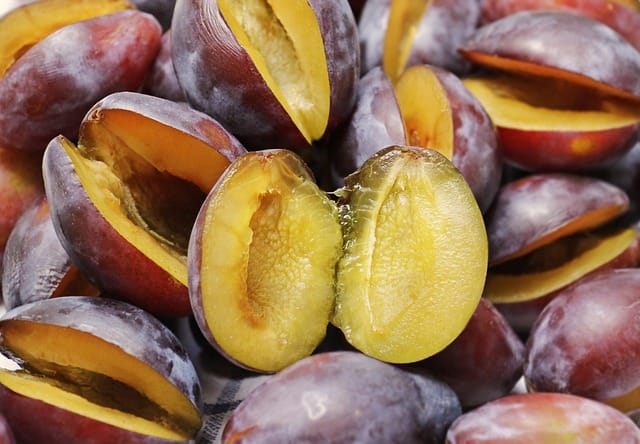How to grow Plums
Growing your own plums can be a rewarding experience

In this article:
- Introduction
- Choosing the Right Plum Variety
- Site Selection
- Soil Preparation
- Planting Plums
- Watering and Irrigation
- Fertilization
- Pruning and Training
- Protecting Against Pests and Diseases
- Harvesting Plums
- Post-Harvest Handling and Storage
- Common Problems and Troubleshooting
- Tips for Successful Plum Growing
- Conclusion
Introduction
Growing your own plums can be a rewarding experience. Plums are not only delicious but also a great source of vitamins and minerals. This article will guide you through the process of growing plums, from selecting the right variety to harvesting and storage.
Choosing the Right Plum Variety
When choosing a plum variety, consider the climate in your area and the space available for planting. Some common plum varieties include Santa Rosa, Black Amber, and Satsuma.
Site Selection
Plums thrive in full sun, so choose a location with at least 6-8 hours of direct sunlight per day. The site should also have good drainage to prevent waterlogged roots.
Soil Preparation
Before planting, prepare the soil by removing weeds and adding organic matter such as compost. Plums prefer slightly acidic soil with a pH of 5.5-6.5.
Planting Plums
Plant plums in early spring, before the buds break. Dig a hole that is wide and deep enough to accommodate the roots. Place the tree in the hole and backfill with soil, gently firming it around the roots. Water thoroughly.
Watering and Irrigation
Provide regular water to young plum trees, especially during dry periods. Once established, plums are moderately drought-tolerant but still benefit from regular irrigation.
Fertilization
Apply a balanced fertilizer in early spring, before new growth begins. Follow the manufacturer's instructions for the recommended dosage. Avoid excessive fertilization, as it can lead to poor fruit quality.
Pruning and Training
Prune plum trees to maintain a balanced shape and remove any dead, damaged, or crossing branches. Training plums to an open center or modified central leader system is recommended for proper tree structure.
Protecting Against Pests and Diseases
Keep an eye out for common plum pests such as aphids, plum curculio, and peach tree borer. Implement a pest management strategy that may include organic sprays or biological control methods. Regularly inspect your trees for signs of diseases like brown rot or plum leaf curl.
Harvesting Plums
Plums are ready to harvest when they are fully colored, slightly soft to the touch, and easily separate from the tree with a gentle twist. Pick them carefully to avoid bruising.
Post-Harvest Handling and Storage
After harvesting, handle plums gently to prevent bruising. Store ripe plums in the refrigerator for up to a week. If you have a surplus of plums, consider canning, drying, or making delicious preserves.
Common Problems and Troubleshooting
Plums may encounter issues such as fruit cracking, sunburn, or inadequate pollination. Identify and address these problems promptly to ensure a successful harvest. Consulting a local agricultural extension office can provide specific guidance for your region.
Tips for Successful Plum Growing
- Regularly monitor soil moisture to avoid over or under watering.
- Mulch around the base of plum trees to conserve moisture and suppress weeds.
- Thin fruits when they are still small to avoid overloading branches.
- Practice good hygiene by cleaning pruning tools and removing fallen fruit to prevent disease spread.
- Learn about local plum tree pests and diseases to proactively protect your trees.
Conclusion
Growing plums requires careful planning and attention, but the reward of harvesting your own delicious fruit is well worth the effort. Follow the steps outlined in this guide and enjoy a bountiful plum harvest for years to come.
